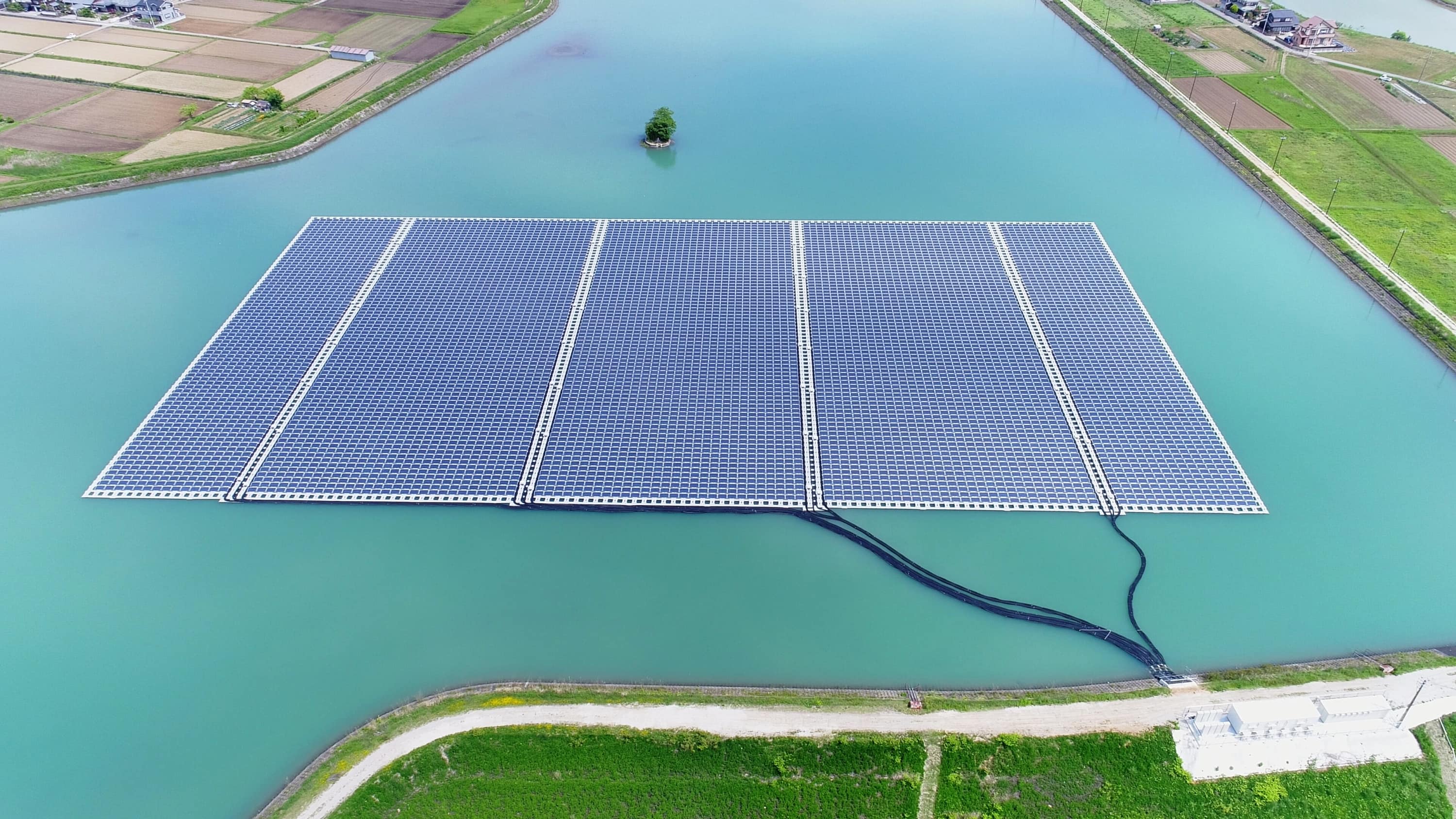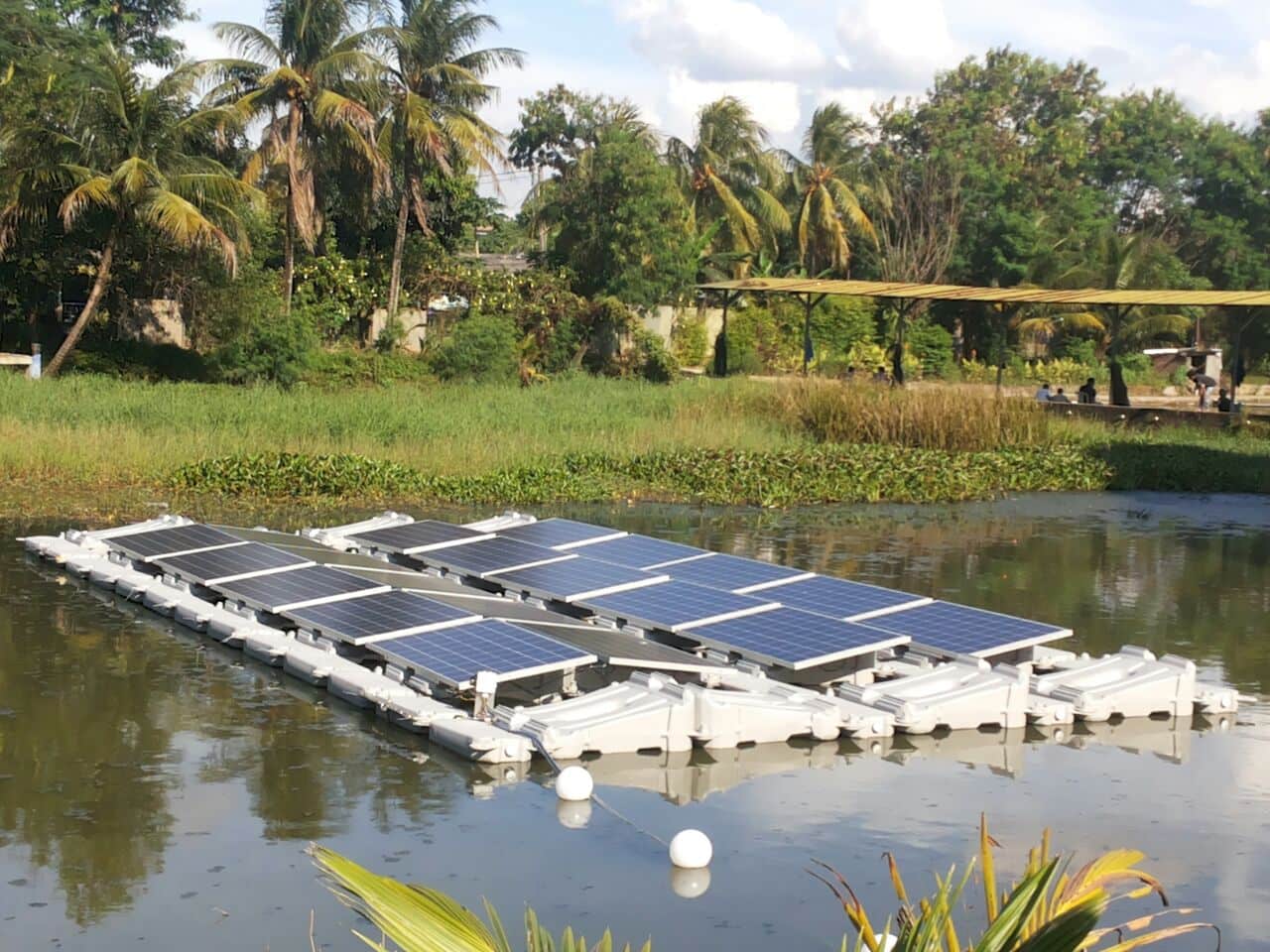The U.S. has been slow to embrace the technology, even though Japan and China are zooming ahead
By Jim Daley on February 7, 2019

Winemaker Greg Allen had a problem. As president of Far Niente Winery in Napa Valley, California, he had done the math on how much land the vineyard could possibly dedicate to solar panels, to offset energy costs. The figure—about two acres—“really hurt,” Allen says. So he compromised: Far Niente completed an array of 2,296 solar panels, 994 of which float on pontoons tethered to the bottom of the winery’s pond. The installation was the world’s first nonexperimental floating solar array.
That was in 2008. Since then floating photovoltaics have proliferated in Asia—yet not so much in the U.S. Japan has more than 60 installations, the most of any country in the world. China, a bourgeoning giant in renewable energy, claims the world’s largest array. That facility, which went online in 2017, floats atop an artificial lake created from a collapsed coal mine near the city of Huainan. The 166,000 panels can produce some 40 megawatts, or enough electricity to power about 15,000 homes. A 2018 World Bank report estimated the global potential for floating solar arrays on artificial water surfaces would exceed 400 gigawatts.
 A floating solar array on an irrigation pond in Hyogo prefecture, Japan. Credit: Ciel & Terre International
A floating solar array on an irrigation pond in Hyogo prefecture, Japan. Credit: Ciel & Terre International
Although U.S. adoption has been slow, some recent deals may turn the tide. A typical installation consists of solar panels on pontoons tethered to the bottom of a reservoir or retention pond—considered easier to utilize than lakes. Floating or underwater cables carry direct current to an inverter on shore where it is converted to alternating current and sent to the local grid. Engineers must consider multiple factors: systems have to withstand high winds and waves, panels must be resistant to corrosion and anchors have to last for 25 years or more.
But floating installations also offer several advantages over land-based arrays: Most obvious is they do not take up valuable parcels that could be used for agriculture or development. The technology can be easier to install than land-based or roof-mounted systems; once assembled, crews float them into place and anchor them. The arrays can improve the environment as well; blocking sunlight from penetrating the water can reduce evaporation and inhibit algae blooms. (It is not yet clear how the arrays might affect fish, birds or other wildlife.) And because solar cells become less efficient as they heat up, the water’s cooling effect can increase their conversion ability by as much as 20 percent.
Given the benefits, the sluggish pace of adoption in the U.S.—which had just 14 installations at the end of 2018—can be puzzling. Teresa Barnes, who manages the photovoltaic reliability group at the National Renewable Energy Laboratory (NREL), says the availability of open land could be one factor. Yet lack of land has often been a driver at the small number of U.S. sites. That was the case for the Kelseyville County Waterworks District in California, which installed a 720-panel array on its wastewater treatment pond in 2018. Good payback is another incentive; the district anticipates it will recoup installation costs within eight years of operation.
 A solar pilot project on a flood control waste pond in Indonesia. Credit: Ciel & Terre International
A solar pilot project on a flood control waste pond in Indonesia. Credit: Ciel & Terre International
More installations could arise if it becomes clearer they can be economical, says Charlie Gay, director of the U.S. Department of Energy’s Solar Energy Technologies Office. (The department is not currently funding any floating solar research projects.) Many of the U.S. installations are recent, so it is too early to know if projected savings are being realized. Far Niente has offset 100 percent of its energy costs in part via a combination of tax breaks and cash rebates.
Robert Spencer, a data scientist and software developer at the NREL, says slow growth in the U.S. may also be due to uncertainties around what the technology can offer. “We’re going to need to have a few high-profile projects that really demonstrate that this can happen at scale and by major players,” he says. Spencer co-authored a study in the December 2018 Environmental Science & Technology that assessed the technology’s potential on 24,419 artificial water bodies in the continental U.S. It found covering just 27 percent of those water bodies with floating solar arrays could produce almost 10 percent of the nation’s current power generation.
Large-scale successes in the U.S. may be coming. Cities and regions could emerge as the leaders. In July 2018 the Los Angeles City Council unanimously approved a proposal for an 11.6-megawatt floating solar pilot plant at the Van Norman Lakes Reservoir, and is currently reviewing feasibility studies. The Tampa Bay Water authority has added a reservoir-based solar power feasibility project to its 2019 capital improvement program, scheduled for approval in June this year, says Maribel Medina, a senior professional engineer for the authority.
The commercial sector is showing more interest as well. Chris Bartle, a business development manager for floating solar at the solar power development firm Ciel & Terre, says his company completely changed its portfolio from land- and roof-mounted solar to floating arrays about nine years ago. He says the firm expects floating photovoltaics to grow considerably in the U.S., particularly in places like California, where land is expensive. “It’s an untapped niche, an untapped surface area of the planet,” he says.
Editor’s Note (2/7/19): This story was edited after posting to remove a quote that erroneously characterized the NREL study's methodology.











Đăng nhận xét